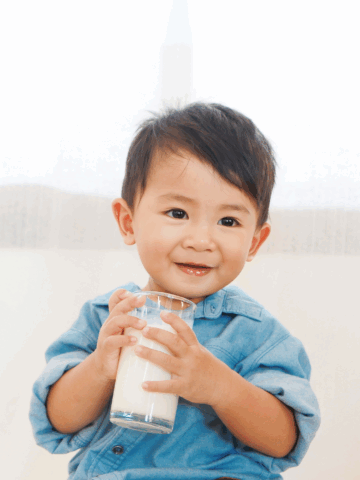By Megan Dean, registered nurse and lactation consultant at CHOC
August is National Breastfeeding Month — a month dedicated to advancing advocacy, protection and promotion of breastfeeding to ensure that all families have the opportunity to breastfeed.
For parents, pumping and storing breast milk is a great way to have breastmilk available for your baby if you go back to work, want to have your partner help with feedings or if you are away for a few hours.
Proper cleaning and sanitizing of your breast pump is extremely important for the health of your baby. Improper cleaning of pump parts has caused harmful bacteria to grow in breast milk or breast milk residue on pump parts and has caused infants to become ill.
Thus, cleaning your breast pump parts after every use is the best way to protect your baby. Use the following tips to ensure your breast pump stays nice and clean.
1. Wash your pump parts by hand
The U.S. Centers for Disease Control and Prevention (CDC) recommends either using a dishwasher or washing by hand to properly clean your pump parts.
To clean by hand, it is very important to use a wash basin and bottle brush that is only used for cleaning the pump kit and baby’s feeding items. Do not place your pump parts directly in the sink. Then, you’ll want to:
- Fill the basin with hot water and soap. Using the bottle brush, scrub items according to the pump kit’s manufacturer’s guidance. The tubing is not usually recommended to be washed.
- Rinse by holding the pump under running water or submerge in a separate basin filled with fresh water.
- Place all parts on a clean dishtowel in a clean area and allow to air-dry parts thoroughly. Do not use a dishtowel to rub or pat parts dry.
2. Wash your breast pump parts in the dishwasher
First, ensure your pump parts are dishwasher safe. Then:
- Place parts in dishwasher with smaller parts placed in a closed-top basket or mesh laundry bag.
- Run dishwasher with hot water on a heated drying cycle or sanitizing setting.
- When complete, remove from dishwasher with clean hands and if items are still wet, place them on a clean dish towel to air-dry.
3. Sanitize your breast pump parts
For your baby’s added protection, it is important to also sanitize your pump parts and cleaning supplies. Don’t forget to clean the wash basin and bottle brush by rinsing them well and allowing them to air-dry between cleanings. It is also recommended to hand wash or dishwasher clean them every few days. If your baby was born prematurely or has other health conditions, clean your wash bin and bottle brush daily.
Pump parts can be sanitized using steam, boiling water, or in a dishwasher on the sanitize setting.
4. Store pump parts in a clean and safe area
Once your pump parts have air-dried thoroughly, they may be stored in a clean and safe area. It is extremely important that parts are completely dry prior to storing in a sealed container or bag as moisture can cause bacteria and mold to grow.
5. Inspect your pump parts
It is important to get in the habit of inspecting your pump parts and breast pump prior to each pump setting. If parts are noted to have cracks, chips, signs of wear and tear, defects, or look moldy, they should be discarded and replaced. Good hand hygiene is essential when handling your breast pump and pump parts as well.
6. Clean any shared breast pumps prior to use
If using a shared breast pump, make sure to use disinfectant wipes to clean the pump, dials, power switch, and countertop prior to use.
7. If you can’t clean your breast pump after use, take other precautions
While the CDC and most breast pump manufacturers recommend cleaning your pump parts after every use to best protect your babies from germs, there may be circumstances where you cannot do so. In these circumstances, the CDC recommends rinsing your pump parts to remove milk residue and then keeping the parts in a sealed bag in the refrigerator to prevent contamination.
If rinsing first is not an option, using a clean paper towel to wipe milk residue off the pump parts can be done alternatively. There have been no studies that have shown this to be a safe method as refrigeration slows the growth of bacteria and does not stop bacteria from growing. Some companies also make hygienic wipes specifically for cleaning pump and bottle parts.
The Food and Drug Administration (FDA) recommends that even if these wipes are used, pump parts should still be cleansed with soap and water appropriately before using them again. Furthermore, if your baby is premature, younger than two months or has a compromised immune system, it is especially important to avoid this method and properly clean your pump parts after every use.
By using these recommended cleaning and sanitizing techniques for your breast pump parts, you are protecting your baby and preserving the amazing nutrients and protective properties of your breast milk! Further information can be found on the CDC website or by speaking with a lactation consultant.
Get the CDC’s breast pump cleaning fact sheets in English and Spanish.
Get more expert health advice delivered to your inbox monthly by subscribing to the KidsHealth newsletter here.
Learn more about CHOC’s Clinical Nutrition Program
At CHOC, we specialize in providing a full continuum of pediatric nutrition services, including inpatient and outpatient services, depending on our patients’ needs.





